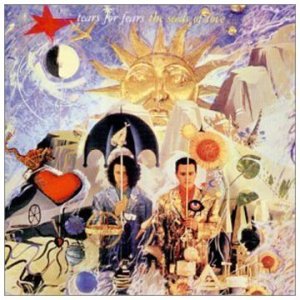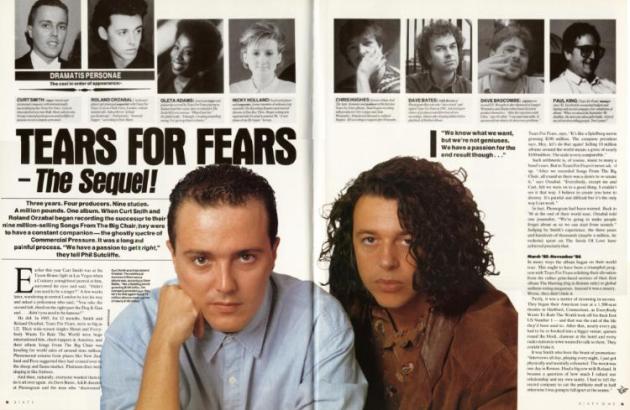 Sylvian’s modus operandi for the studio sessions that made up his classic 1984 debut album perfectly reflected its ‘anti-rock’ stance.
Sylvian’s modus operandi for the studio sessions that made up his classic 1984 debut album perfectly reflected its ‘anti-rock’ stance.
Steve Jansen’s drums and/or percussion were generally recorded first, usually followed by David’s rough keyboards/guitars and a guide vocal. After that he worked closely with guest musicians on a one-to-one basis.
And the latter aspect is the main focus of some fascinating, newly-released footage of the Hansa Studio sessions in Berlin, documented by Sylvian’s then-partner Yuka Fujii.
It’s an absolute treat for Brilliant Trees fans and a great chance to see what actually happened in most recording studios during the 1980s. In common with making movies, there’s a lot of waiting around, a fair bit of chewing the fat and then some pretty intense bursts of performance/concentration.
It’s fascinating watching Sylvian collaborating with his good friends Ryuichi Sakamoto and Holger Czukay. Sakamoto is a model of quiet concentration, quickly learning the chords to album outtake ‘Blue Of Noon’. Czukay is full of smiles and fun while tinkering with his Dictaphone and laying down a guitar solo on ‘Red Guitar’ which didn’t make the cut.
 Elsewhere we finally get to hear what ball-of-energy guitarist Ronny Drayton actually plays on ‘Pulling Punches’, and Jon Hassell is every inch the NYC avant-garde auteur (in his excellent book ‘Cries And Whispers’, Anthony Reynolds reports that he did just one five-hour session for Brilliant Trees, asking for and getting $5,000 upfront plus co-writing credits for the two tracks he played on).
Elsewhere we finally get to hear what ball-of-energy guitarist Ronny Drayton actually plays on ‘Pulling Punches’, and Jon Hassell is every inch the NYC avant-garde auteur (in his excellent book ‘Cries And Whispers’, Anthony Reynolds reports that he did just one five-hour session for Brilliant Trees, asking for and getting $5,000 upfront plus co-writing credits for the two tracks he played on).
But who knew he recorded his solos sitting on the floor in the corner of a tiny studio, Sylvian at his elbow? For his part, Sylvo is generally smiley, quiet, engaged, charming, extremely professional and seems to have a good rapport with co-producer Steve Nye.
Sadly the short bit of footage that emerged recently (then rapidly disappeared) of bassist Wayne Braithwaite recording ‘Red Guitar’ is not reinstated here.
The clip is a vital addition to one’s enjoyment of Brilliant Trees – check it out (and I’ve included Sylvian’s own notes on the footage below) before it gets taken down.
This raw footage, shot on what’s now seen as a primitive camera but which was a top of the line consumer product at the time, a massive, unwieldy object, was documented by Yuka Fujii. I’ve put the material together in the order it was recorded to give a very general idea of the process of development. It’s been my practice to work closely with each individual musician since my earliest days with the band in an attempt to get the best results. I’ve always maintained the band prepared me for working with others, gave me the confidence to work with my peers, the ‘newcomers’ in the room all being older than myself (25). At this point in time Ryuichi’s English was very rudimentary (this was to change radically within the next ten years or so) so we had to communicate as economically as possible, or rather, 95% of the exchange was purely musical. Yuka and Peter Barakan would step in when greater explication was needed. Holger’s English remained consistent throughout the years i knew him. Again, subtleties could be lost so the dialogue was relatively basic. These sessions in Berlin were my first step in creating what would become ‘Brilliant Trees’ and my initial move away from the structure of the band. It was one of the happiest recording experiences I can recall while signed with a major label. Because of the success of having everyone meet in Berlin, a city native to no one involved, it felt like an adventure. People arrived with a spirit of openness and receptivity. I went on to repeat this process with albums such as ‘Secrets of the Beehive’, ‘Rain Tree Crow’, and ‘The First Day’ among others.
I’ve left a lot of Jon’s conversation in as it’s of interest. In one section he’s explaining the nature of raga and how he came to it by working with renowned Indian singer/teacher Pandit Pran Nath. He was also intimating that, as ‘Brilliant Trees’ asked that he play in the western tradition, ‘steps’ as he describers it, he didn’t see how his performance could be incorporated into the title track. I persevered. He returned to his hotel room that evening to work on it and, overnight, came up with something so beautiful and complimentary to the piece, that moved away from raga (outside of the coda), and gave us one of the rare, if not unique recordings, of Jon playing in the western tradition.
Besides the limited nature of my vocabulary, the paired down nature of our exchanges for the reasons given above, my only regret is that I didn’t use Holger’s guitar solo on ‘Red Guitar’. At the time I felt it a little lightweight compared to the mix Steve Nye was prepping. I would now mix it quite differently pushing the drums way back (from the mid 70s through the 80s, drums were often foregrounded, a trend I wasn’t fond of. I fought for a change of approach on ‘Beehive’ and that’s about the time when things began to resemble how I’d initially imagined the material. There are always exceptions of course, ‘Weathered Wall’, ‘Before the Bullfight’ are just two examples). I loved Holger dearly and wish I’d imortalised his solo in some capacity. If it still exists on multitrack, all is not lost.
I came away from Berlin with an incomplete album and preceded to write a few remaining pieces to complement the best of what I had. “The Ink in the Well’, ‘Nostalgia’ and ‘Backwaters’ were added, ‘Blue of Noon’, an alternate version of ‘Forbidden Colours’, and a new track composed with Ryuichi were, with the exception of the latter, to find a home elsewhere. ‘Blue of Noon’ was originally a vocal piece but I felt this version didn’t hold together and, in any case, was out of place in the context of the album. Virgin released a working rough mix of the track as the B-side of a single.
I hope the mutual respect and good humour of everyone involved comes across along with their seriousness and committed nature to the material. Rarely has this proved otherwise for me. In this respect I feel very fortunate. From this session I made lifelong friends, a trend that was to continue for many years to come.
david sylvian july 2021


